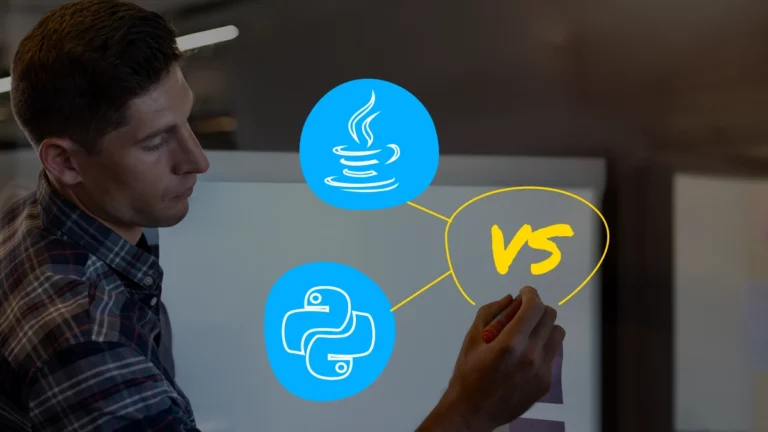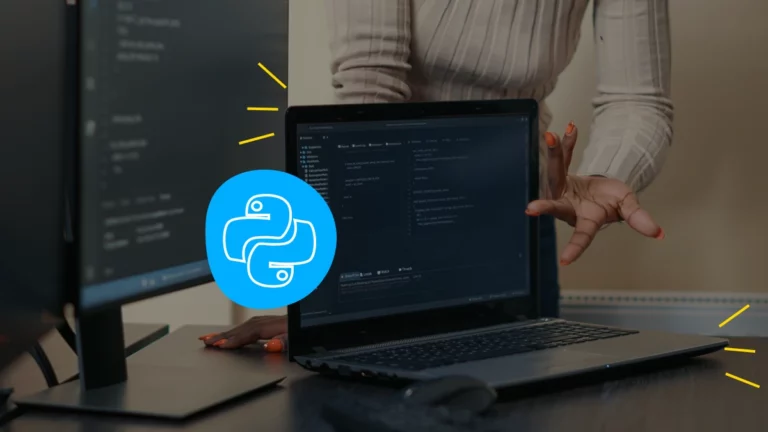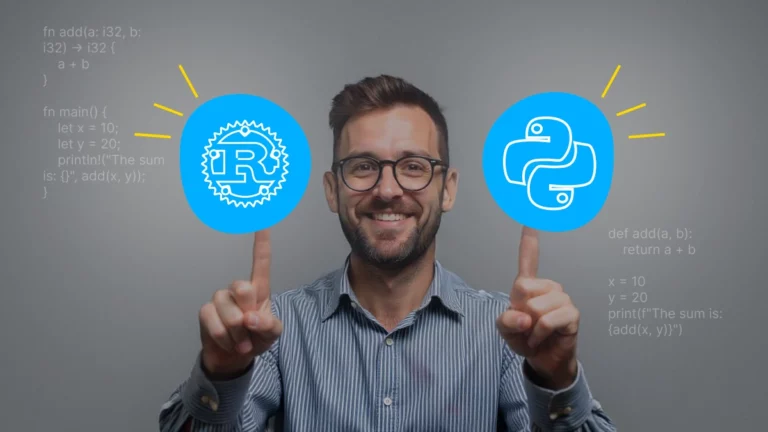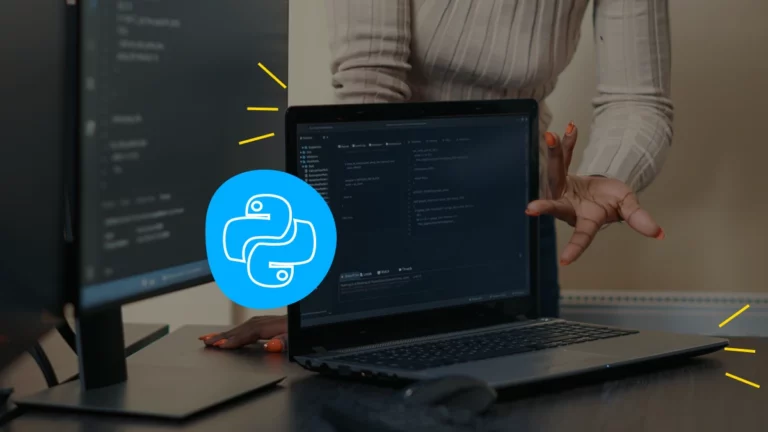Best Python Frameworks for Web Development, Data Science, ML, and GUI in 2025
- Types of Python Frameworks
- Top Full-Stack Python Frameworks
- Top Python Microframeworks
- Popular Asynchronous Web Frameworks Written in Python
- Specialized Python Frameworks for Data Science and Machine Learning
- Frameworks for GUI (Graphical User Interface) in Python
- How to Choose the Best Python Framework for Your Project
- When to Avoid Using a Framework
- Summing Up
Python is one of the most popular programming languages, according to Stack Overflow, which is why companies often choose it for their projects. We’ve reviewed top-rated Python frameworks to help you streamline building, scaling, and maintaining applications.
Below, we’ll check the most popular Python frameworks in 2025 used for web, data science, machine learning, and GUI app creation.
You’ll also learn how to choose the Python framework that fits your project, discover when to avoid using toolkits, and check how to optimize project costs.
Types of Python Frameworks
Python frameworks are widely used for web programming; however, software engineers also use them for data science, machine learning, automation, and game development.
Python frameworks fall into three main categories that embrace different project needs, and we’ll learn more about each of them.
Full-Stack Frameworks
A full-stack framework is a comprehensive solution that includes:
- Backend programming tools
- Frontend rendering
- Security features
- Administrative tools.
When assembled in a system, these pre-built solutions allow engineers to create scalable, reliable, and maintainable applications.
Outlined are the primary features of each component:
| Category | Tools | What They Do |
| Server-side development | Built-in URL routing systems | Map user requests to specific functions or views |
| Database Management (Object Relational Mapping (ORM)) | Allow developers to query databases through Python objects | |
| Authentication and authorization | Control login, registration, and access processes | |
| Frontend integration | Templating engines | Enable seamless integration between backend data and frontend design |
| Static file management | Streamlines frontend delivery through support for managing CSS, JavaScript, and images | |
| Security features | CSRF (Cross-Site Request Forgery) and XSS (Cross-Site Scripting) protection | Safeguards against common web security threats |
| Input validation | Checks if data provided by users meets predefined rules | |
| Administrative tools | Pre-built admin dashboards | Allow for managing apps without custom coding |
Best-Suited for
End-to-end application development of e-commerce platforms, content management systems, API-driven projects, social networking sites, and enterprise apps.
These toolkits ensure scalability, maintainability, and quick software creation with minimal setup.
Microframeworks
Microframeworks are lightweight packages that offer essential instruments for the rapid development of flexible and simple apps.
They don’t include ORMs, authentication systems, or form validations, minimizing potential constraints and overheads of unnecessary pre-configured features.
The main characteristics of microframeworks are:
- Minimalistic functionalities. Developers get core features like routing, managing HTTP requests and generating responses, and basic middleware support.
- Lightweight. Fewer dependencies allow for faster execution and reduced resource usage. Small-size apps boast quick deployment and efficient operation.
- Flexibility. Without rigid structures, developers can integrate external libraries or write custom solutions for additional functionalities on demand.
- Ease of use. Microframeworks’ intuitive APIs and minimal-configuration approach allow developers to set up projects with efficient code structures quickly.
- Extensibility. Because microframeworks are modular, coders can quickly add new features or embed custom processing logic into query management to meet your solution’s requirements.
Best-Suited for
Small-scale and high-performance systems like web APIs or minimal web applications. However, microframeworks’ exceptional flexibility makes them ideal for complex, modular programs, too.
Asynchronous Frameworks
These toolkits are designed to handle large volumes of concurrent operations like database queries, request handling, or file operations.
This framework provides continuous, non-blocking execution of tasks, making them ideal for high-performance interactive applications.
The key characteristics of asynchronous frameworks are:
Concurrency
Asynchronous programming allows Python coders to execute thousands of operations simultaneously or in overlap. Managing multiple tasks within a single thread optimizes resource usage.
Non-Blocking I/O (Input/Output) Operations
This feature allows the framework to manage activities asynchronously. Python’s event loops pause tasks and switch to others without waiting for I/O operations to complete.
Event-Driven Architecture
The activity-based configuration of asynchronous platforms allows apps to respond efficiently to events after being triggered, which keeps the system responsive and scalable.
Asynchronous APIs
By leveraging Python’s asyncio library, developers create high-performance, non-blocking APIs that reduce latency and improve application throughput.
Best-Suited for
Real-time applications, streaming services, IoT systems, gaming servers, microservices, and data processing pipelines.
The asynchronous capabilities make these frameworks suitable for Python web development and other domains.
Below, we’ll check the top-rated Python frameworks for web development in 2024, according to Statista and Stack Overflow.
Top Full-Stack Python Frameworks
Let’s explore which full-stack frameworks Python adepts use to create high-quality web apps.
Django
Django is a full-stack Python web application framework designed to promote fast-paced programming and clean code structure.
It includes instruments that streamline the designing of robust and scalable apps.
Django’s key characteristics are:
1. Model-View-Template (MVT) Architecture
The MVT pattern lets Django separate database interactions (model), segregate business processes (view), and render dynamic HTML for the front end (template) independently.
Splitting of the data, logic, and presentation layers ensures clean separation and makes applications modular and easily maintainable.
2. Built-in ORM (Object-Relational Mapper)
With the ORM abstraction layer, web developers don’t have to construct queries to interact with databases manually.
As a database-agnostic set of Python objects, the ORM handles CRUD (Create, Read, Update, Delete) operations seamlessly, making all interactions simple, secure, and efficient.
3. Admin Interface
This built-in, auto-generated web-based tool for managing application records allows engineers and administrators to manipulate data without writing custom code.
Its customization of layout, display fields, and filters, secure authentication, and extensibility simplify backend management and quick prototyping.
4. Security Features
Django includes default security measures that allow coders to build web applications protected against common vulnerabilities.
They cover session security and password management, protect apps from clickjacking and SQL and XSS (Cross-Site Scripting) injections, and offer CSRF (Cross-Site Request Forgery) tokens.
5. URL Routing and Middleware
Developers can define URL patterns with specific functions to ensure their readability for humans and dynamic routing with parameters.
Middleware processes requests and can modify them before sending them to clients. For instance, middleware adds security headers, manages user sessions, associates users with requests, etc.
Django Use Cases
Django belongs to the top Python frameworks for web development known for its scalability, robust security, and helpful features. It’s used for creating:
- E-commerce platforms
- Content management systems (CMS)
- Social networking sites
- APIs and RESTful services
- Data-driven apps
- Enterprise applications
- Educational platforms.
Pyramid
Pyramid is a flexible and lightweight Python web application framework that helps developers build simple web applications and scale them.
It follows the “start small, finish big” approach to web development and offers programmers complete control over the software’s architecture.
Pyramid boasts the following features:
1. Flexibility
The minimalist design allows developers to simplify the development process by providing only the necessary tools. Pyramid doesn’t require specific libraries, databases, or templating engines.
Instead, it gives developers full control over the project’s architecture and allows them to add components, plug-ins, or third-party libraries.
2. Scalability
Pyramid is suitable for a wide range of web projects since it fits simple apps and enterprise-grade systems.
Its modular architecture allows you to begin with minimal overhead and seamlessly integrate additional functionalities as your application scales.
The traversal-based routing and middleware support efficiently handle the increasing traffic and complexity.
3. Minimalism
This framework provides only the essential tools like request handling and routing and avoiding imposing components like ORMs, templating engines, or authentication systems.
This way, it reduces expenses and complexities for small, basic web development projects while remaining efficient and fully scalable.
4. Extensibility
Pyramid’s modular design allows developers to expand apps’ capabilities with preferred libraries, components, and tools.
They can incrementally add logging, caching, or security functionalities, implement versatile routing mechanisms, or integrate reusable plugins and packages, adapting to the application’s complexity.
5. Security
The flexible authentication system that supports multiple schemes and ACLs (Access Control Lists) that define fine-grained permissions makes Pyramid one of the top frameworks for developing modern web applications.
They’re secured with cross-site scripting, CSRF protection, secure cookie management, and custom security policies.
Pyramid Use Cases
Pyramid’s flexibility and scalability make it ideal for web application development of flexible-size solutions, including:
- Custom web applications
- APIs and microservices
- Enterprise applications
- Content management systems
- Scientific apps
- Prototyping
- E-commerce platforms.
Top Python Microframeworks
While providing only essential features like routing and request handling, microframeworks allow developers to extend app functionalities to complete their web development tasks.
Let’s explore toolkits that fall under the category of small-scale frameworks.
Flask
Flask is a micro web framework that provides essential tools while prioritizing simplicity. It’s easy to use, so beginners and seasoned developers find it perfect for web app development.
The benefits of Flask are:
1. Minimalistic Core
Flask includes only basic functionalities like routing, request handling, and response generation. This gives developers full control over libraries and extensions, allowing them to organize the code as they see it.
2. Templating Engine
Jinja2 is a powerful, secure, and flexible engine that allows for real-time content rendering, enables dynamic logic, uses built-in filters, and reuses layout structures with base templates.
3. Extensibility
Flask has a plug-and-play structure and supports a vast ecosystem of extensions, making it easy to add features like database integration, authentication, forms, REST APIs, and caching.
4. Routing and URL Mapping
Dynamic URL mapping, several HTTP methods, custom route names, error handling, and function decorators enable clean and dynamic URL structures. This development framework makes apps modular and maintainable.
5. Testing Support
The built-in testing features like Test Client and Request Context Management help simulate request environments without running the server. Integration with unit testing and test-specific configuration contributes to early bug detection.
Flask Use Cases
Flask’s flexibility and lightweight nature make it equally suitable for small apps and complex systems like:
- RESTful APIs and microservices
- MVPs and prototypes
- Small to medium-sized web apps
- Real-time applications
- Automation scripts and dashboards
- Educational projects.
Bottle
Bottle is a single-file micro web framework for small-scale projects and prototyping with a focus on simplicity and performance.
The core characteristics of Bottle are:
1. Single-File Design
The entire Bottle framework is contained in one Python file, which is easy to integrate into projects without dependencies outside the Python standards library and external packages.
2. Routing
Bottle can map fixed URLs to specific functions, support dynamic routes, define parameter types, handle specific HTTP methods, and match routes in the order they are defined.
3. Templating Engine
This engine allows developers to create templates with placeholders for data and add loops and conditionals for dynamic HTML content with a simple, syntax-friendly, file-based structure.
4. Built-in HTTP Server
Bottle doesn’t require external web servers like Gunicorn or uWSGI (Web Server Gateway Interface).
Instead, it includes lightweight, development-friendly servers launched with a function specifying the host and port numbers.
5. Request/Response Handling
With the streamlined flow of HTTP requests and responses between clients and the server, developers can easily access, process, and manipulate queries and return customized and interactive replies.
Bottle Use Cases
Bottle is one of the top Python frameworks for small-scale applications, prototyping, and environments with limited resources.
Some of its common use cases are:
- RESTful APIs
- Prototyping and MVP
- Embedded systems and IoT
- Web software creation learning projects
- Static or dynamic websites
- Internal tools and dashboards.
Popular Asynchronous Web Frameworks Written in Python
Asynchronous Python frameworks are essential for developing applications that are flexible, adaptive, and effective.
Developers often select the toolkits below for projects requiring real-time features and high concurrency.
FastAPI
FastAPI is a cutting-edge, high-performance framework designed for building APIs swiftly and effectively. Its ease of use, speed, and automatic API documentation make it ideal for this purpose.
Here’s why developers use FastAPI:
1. Asynchronous Support
This standout feature helps handle long-running and I/O-bound tasks without blocking other requests.
Asynchronous libraries allow developers to work effectively with databases, HTTP requests, and data handling.
2. Type Hints and Validation
By declaring data models with type hints, developers ensure that incoming requests conform to the expected structure and data types needed for web development.
Type Hints also validate the correct format of the sent data.
3. Automatic Documentation
With Swagger UI and ReDoc’s user-friendly interfaces along with OpenAPI standards, FastAPI generates interactive documentation for every endpoint in web applications using Python.
Additionally, devs can customize titles, descriptions, tags, and metadata.
4. Dependency Injection
Developers can define reusable, modular dependencies that can be easily injected into routes and ensure clean and maintainable code.
It separates logic from routes and simplifies managing shared resources in the software development process.
5. High Performance
Due to its underlying technologies and design principles, FastAPI is one of the fastest Python web frameworks.
It uses asynchronous programming, Pydantic library for data parsing and validation, and compiled API schemas to handle high traffic with minimal latency.
FastAPI Use Cases
FastAPI is ideal for building a web app that requires scalability, fast response processing, and robust APIs. Its versatility makes this suitable for diverse use cases:
- RESTful APIs
- Microservices
- Real-time web applications
- IoT
- Prototyping and MVPs
- Large-scale systems.
Tornado
Tornado is a Python web development framework and an asynchronous library built to manage thousands of concurrent tasks.
It’s particularly suitable for apps requiring real-time communication and swift responses like live updates, WebSockets, and long-lived connections.
Tornado is popular due to:
1. Asynchronous I/O
Tornado uses non-blocking I/O for network communication, file operations, and database queries, maximizing server productivity and minimizing resource consumption.
2. WebSocket Support
This feature enables full-duplex, instant communication between clients and servers. WebSockets facilitate a persistent connection, eliminating the need for repeated HTTP requests.
3. Custom Web Server
In contrast to traditional Python frameworks like Django, Pyramid, or Flask, which rely on WSGI-compatible servers, Tornado has a fully integrable built-in server that allows apps to be run directly.
4. High Scalability
Non-blocking I/O, event loops, WebSockets, custom servers, horizontal scaling, and asynchronous libraries contribute to Tornado’s ability to manage large numbers of concurrent connections effectively.
5. Routing and Request Handling
Tornado defines URL routes using a list of tuples and maps them to request handlers. It also supports dynamic URLs and regex-based patterns for complex routing requirements.
Tornado Use Cases
Tornado has been used in Python programming to develop web solutions requiring live communication, low latency, and high scalability, for instance:
- Streaming services
- Real-time apps
- IoT solutions
- High-traffic APIs
- Live dashboards
- Gaming service
- Long polling or HTTP streaming.
Specialized Python Frameworks for Data Science and Machine Learning
Python 3.9 and its later versions are widely used for AI development, offering frameworks available for data science and machine learning projects.
These packages offer pre-built tools and libraries, streamlining complex workflows.
Below are the top three existing frameworks for building, training, and deploying ML models and visualizing data.
TensorFlow and Keras from Google
TensorFlow is a comprehensive, open-source Python framework for machine learning and deep learning.
It’s designed for research and production and contributes to numerical computation, neural networks, and large-scale ML applications.
Keras, a high-level API based on TensorFlow, facilitates quick prototyping and experimentation with ML and deep learning models.
Its key features are:
- Scalability. TensorFlow is designed to scale across multiple GPUs (Graphics Processing Units), TPUs (Tensor Processing Units), and distributed systems, making it suitable for large datasets and advanced computations.
- Flexibility. It offers high-level APIs for rapid prototyping and core functions. Models can be deployed across web and mobile app environments and cloud platforms and integrated with advanced libraries, ensuring versatility.
- Model deployment. With the flexible, high-performance serving system that supports model updates and rollbacks and TensorFlow Lite that optimizes models for mobile and IoT platforms, developers simplify the transition to production.
- Comprehensive tools. This framework includes a rich ecosystem of instruments that streamline machine learning workflow, including TensorFlow Core, Keras, TensorFlow Lite, TensorFlow.js, TensorBoard, TensorFlow Extended (TFX), etc.
TensorFlow Use Cases
TensorFlow’s modular architecture and extensive libraries allow developers to work across solutions in the following domains:
- Computer vision
- Autonomous systems
- Predictive analytics
- Time-series analysis
- Natural language processing (NLP)
- Speech and audio processing
- Healthcare and medicine
- Reinforcement learning
- Recommendation systems.
PyTorch from Facebook
PyTorch is the second of the 3 best frameworks for Python ML developers and data scientists.
They use it for building deep-learning apps, leveraging its dynamic computational graphs, a rich ecosystem of tools, and support for GPU acceleration.
The outstanding features of PyTorch are:
- Dynamic computation graphs. The toolkit allows for instant adjustment of models through dynamically created computation graphs, which is also beneficial for tasks requiring complex architectures like recurrent neural networks (RNNs).
- GPU acceleration. Built-in GPU support allows engineers to train models faster and switch between the CPU (Central Processing Unit) and GPU through a specific programming operation.
- Autograd. PyTorch provides an automatic differentiation engine that calculates gradients, simplifying backpropagation for complex models with graphs, custom gradients, Tensor Tracking, context manager, and vector-Jacobian products.
- TorchScript is an intermediate representation of a PyTorch structure that can optimize, serialize, and deploy models to production. It bridges the gap between research and deployment without requiring the Python runtime.
PyTorch Use Cases
PyTorch’s flexibility, dynamic computational graphs, and robust ecosystem make it suitable for ML and deep learning applications, while its integration with research and production has established it as a leading framework across such industries:
- Computer vision
- Reinforcement learning
- NLP
- Time-series analysis
- Generative models
- Scientific research
- Deployment in production
- Personalized recommendation systems
- Prototyping.
Scikit-Learn
Scikit-learn is a powerful library for tasks handled by classic machine learning algorithms.
Based on foundational libraries like NumPy, SciPy, and matplotlib, it offers efficient data analysis, modeling, and validation instruments.
Additionally, it’s empowered with an intuitive API and comprehensive documentation, making it popular for beginners and experienced data scientists.
Its key attributes are:
- Comprehensive ML tools. Scikit-learn supports supervised and unsupervised learning, including classification, regression, clustering, and dimensionality reduction. It also includes standard ML algorithms like linear regression, decision trees, k-means, etc.
- Preprocessing and feature engineering. The library uses tools for scaling, normalization, and encoding data and supports feature selection and dimensionality reduction.
- Model evaluation and validation. This feature provides metrics for assessing model performance, such as accuracy, precision, recall, and F1 score. It also allows cross-validation and hyperparameter tuning.
- Pipeline support. Scikit-learn’s pipeline functionality streamlines ML workflows. It combines multiple steps into a cohesive process and packs it into a unified object, reducing the risk of data leakage and model evaluation.
Scikit-Learn Use Cases
Scikit-learn Python library is a collection of versatile tools for machine learning tasks like data preprocessing, model training, and evaluation that boast simplicity and efficiency.
Below are examples of how developers use this package:
- Categorizing data into classes (classification)
- Grouping similar data points (clustering)
- Predicting continuous numerical values (regression)
- Anomaly detection
- Recommendation systems
- Predictive analytics
- Time-series analysis
- Dimensionality reduction
- Educational purposes
- Prototyping and research.
Frameworks for GUI (Graphical User Interface) in Python
Python offers various GUI frameworks for creating desktop applications. These frameworks include tools and libraries for building interactive user interfaces with windows, buttons, menus, and other graphical elements.
Let’s explore the three most popular Python GUI Frameworks.
Tkinter
Tkinter is a standard Python library for creating GUIs included in Python installation and is one of the most accessible instruments for web apps.
It’s lightweight, easy to use, and suitable for building basic and moderately complex solutions.
Python experts prefer Tkinter because of its:
- Built-in GUI library. Developers can start building GUIs without installing external packages, as the library is bundled with the Python environment on Windows, macOS, and most Linux distributions.
- Widget support. The framework contains a diverse set of widgets, including basic (Label, Button, Entry), advanced (Text, Listbox, Menu), specialized (Canvas, Scale) ones, and containers and layouts (Frame, PanedWindow).
- Cross-platform compatibility. Apps built with Tkinter run seamlessly on major operating systems, maintaining consistent functionality and core behavior. This is possible as the ecosystem handles file paths and encoding differences.
- Event-driven programming. User activities, device readings, or messages from other software become the events that impact the flow of applications created with Tkinter. The event loop monitors events and forwards them to handlers.
Tkinter Use Cases
Tkinter is especially popular for its lightweight, cross-platform, and easily deployable applications.
Here are its key use cases:
- Basic desktop applications
- Educational tools
- Prototyping
- Data visualization tools
- Utility applications
- Games and entertainment
- Configuration and control panels
- Tools for developers
- Business applications
- Interactive forms and input apps.
PyQt
PyQt is a set of Python interfaces for the Qt framework that facilitates the development of feature-rich, cross-platform GUIs.
PyQt boasts such functionalities:
- Comprehensive widget toolkit. Developers can customize buttons, sliders, text fields, tables, and other basic widgets with QLabel, QPushButton, QLineEdit, etc. Advanced widgets enable tree views, web views, 2D/3D graphic support, dialog boxes, and menus.
- Cross-platform support. Applications built with PyQt require no or minimal changes to run on different operating systems. However, they have a native look and feel and unified APIs, allowing for platform-specific functionalities.
- Qt Designer integration. With access to the drag-and-drop GUIs, developers don’t have to code them manually. Engineers can preview UIs directly in this tool, design layouts, and customize imported code.
- Extensive modules. PyQt offers a QtCore module for basic functionalities like timers, threads, and file handling. QtGUI provides widgets and graphical rendering, QtMultimedia handles audio and video, and QtNetwork brings networking capabilities.
PyQt Use Cases
PyQt offers a comprehensive widget toolkit, cross-platform compatibility, and seamless integration with Python. So, it can be suitable for diverse solutions, including:
- Desktop applications
- Data visualization tools
- Multimedia apps
- Business and productivity software
- Educational tools
- Scientific and research apps
- Games and interactive apps
- Developer tools
- Custom interfaces for existing software
- System management tools.
Kivy
Being designed for both desktop and mobile platforms, this open-source framework helps developers create multi-touch apps and cross-platform GUIs.
Kivy’s main features are:
- Cross-platform support. Python engineers can write the logic and UI once and deploy the same code on all supported platforms, including embedded devices. Kivy provides consistent app functionality and appearance across operating systems.
- Multi-touch support. Kivy’s touch-driven functionality is built into its architecture, enabling the creation of apps for smartphones, tablets, kiosks, etc. It can handle multiple simultaneous touch inputs and common finger gestures.
- Built-in graphics engine. The framework’s engine is designed to render high-quality visuals. It uses the OpenGL ES 2 graphics API to deliver smooth and responsive performance for GUI applications, even on resource-constrained devices.
- Modern UI design. Kivy offers layout widgets that instantly adapt to various screen sizes. It also includes fading, sliding, and scaling animations and transitions between screens. For high-quality visuals, it supports scalable vector graphics (SVG).
Kivy Use Cases
With Kivy, developers can create highly interactive applications with dynamic UIs. The framework’s versatility and flexibility make it perfect for building solutions that run on Windows, macOS, Linux, Android, and iOS.
Developers use Kivy for:
- Mobile applications
- Interactive dashboards
- Touchscreen kiosk systems
- Educational apps
- Gaming projects
- IoT interfaces
- Multimedia applications
- Prototyping and UI/UX testing
- Scientific apps
- Business software solutions.
How to Choose the Best Python Framework for Your Project
Selecting the right toolkit depends on several factors, so use this decision table to make your choice.
| Area/Category of Software Development | Software Types/Features | Framework to Choose |
| Understand your project requirements | ||
| Web Development | Full-stack web applications | Django or Flask |
| APIs with high performance and modern features | FastAPI | |
| GUI Creation | Interactive desktop or cross-platform applications | PyQt or Kivy |
| Simple, lightweight GUI applications | Tkinter | |
| Machine Learning and Data Science | Deep learning projects | TensorFlow or PyTorch |
| Traditional machine learning tasks | Scikit-learn | |
| Real-Time Applications | Apps requiring real-time communication or high-concurrency handling | Tornado or Sanic |
| Mobile Applications | Cross-platform, touch-friendly apps | Kivy |
| Consider Project Complexity and Scale | ||
| Simple Projects | Small-scale applications or prototypes | Flask, Bottle, or Tkinter |
| Complex Projects | Advanced features, scalability, and extensibility | Django or PyQt |
| Evaluate Performance Needs | ||
| High Performance | Optimized for speed and concurrency | FastAPI, Sanic, or Tornado |
| Standard Performance | Suitable for general-purpose applications | Django or Flask |
| Assess the Learning Curve and Development Time | ||
| Beginner-Friendly | Offer simplicity and well-documented APIs | Tkinter (GUI), Flask (web), or Scikit-learn (ML) |
| Advanced Features | Provide advanced functionality but may require more learning effort | Django, PyQt, or TensorFlow |
| Consider Platform Compatibility | ||
| Cross-Platform Applications | Multi-platform GUIs | Kivy or PyQt |
| Can be deployed on any web app server | Flask or FastAPI | |
| Mobile Platforms | Mobile app development | Kivy |
| Assess Flexibility and Customization Needs | ||
| Highly Flexible Frameworks | For a modular, “build your own stack” approach | Flask, Bottle, or FastAPI |
| Opinionated Frameworks | For a more structured, all-in-one solution | Django |
Once you need professional advice on which framework will fit your needs or hire a dedicated development team for your Python project, we can help.
Mobilunity possesses extensive expertise in hiring Python programmers and a deep understanding of the tech hiring market.
We have assembled proficient Python teams for 7 clients and maintain a talent pool of 1,300+ junior, mid-level, and senior Python devs.
How Much Does It Cost to Hire a Python Developer?
While Stack Overflow reports the average annual salary of a Python engineer as $67,723 (globally), Glassdoor shows the following total pay for this role in several countries.
| Country | Junior (0-1 years of experience) | Mid-Level (1-3 years of experience) | Senior (4-6 years of experience) |
| USA | $88,500 | $114,300 | $129,300 |
| Germany | $64,400 | $66,500 | $68,500 |
| Ukraine | $18,000 | $48,000 | $66,000 |
| Mexico | $12,200 | $18,700 | $23,500 |
| Romania | $11,700 | $18,100 | $27,500 |
| Philippines | $5,600 | $16,600 | $19,100 |
US and European companies often reach out to Mobilunity, asking to hire remote Python developers, especially when the demand for AI and ML engineers has skyrocketed. So, we confirm the remunerations of Ukraine-based tech experts.
If you’d like to learn more about how we provide Python devs, explore the case below.
In 2017, 3e Joueur, an established FinTech company based in Quebec, reached out to us after working with multiple vendors across Mexico, the Dominican Republic, and Ukraine.
However, they were seeking a more reliable partner to hire a Python programmer with expertise in FinTech who also shared their vision. We successfully provided the perfect match for their needs.
Afterward, the 3e Joueur decided to expand its collaboration with us by growing their development team and hiring a CTO for their flagship product, FinExpert, an online credit rating platform.
When to Avoid Using a Framework
While frameworks are powerful tools that simplify development, there are scenarios where using a Python framework may not be necessary:
For Simple One-Off Projects
Since frameworks require installation and configuration and often introduce dependencies, extra libraries, and files, plain Python allows developers to jump straight to programming.
The codebase will remain free of unnecessary components, letting devs quickly write scripts and functions directly related to the task.
Additionally, it offers complete visibility and control over the code, simplifying its debugging and maintenance.
When Performance Is Critical
Avoiding a framework can maximize coding speed, efficiency, and resource usage in performance-sensitive apps.
A framework offers direct access to low-level operations and flexibility to write optimized code for critical sections.
It also helps avoid middleware and routing layers for real-time or high-frequency systems.
By including only essential modules and libraries, developers reduce application size and memory, making it easier to pinpoint performance issues.
For Custom Solutions
Frameworks often enforce predefined structures and patterns that may not align with the project’s needs.
Without them, developers can directly access core libraries, enabling fine-grained control over every aspect of the application.
Optimized, purpose-built code can achieve better performance, and unconventional approaches encourage engineers to experiment with techniques, algorithms, and architectures.
Though frameworks provide structure and efficiency, sometimes they aren’t an optimal choice.
Avoiding frameworks can lead to better results for small-scale, performance-critical, or highly customized projects.
Summing Up
Thousands of businesses employ Python as a programming language to create diverse software solutions.
The right framework is critical for building efficient, scalable, and innovative apps and its choice will depend on your project’s requirements.
With advancements in 2025, Django, Flask, TensorFlow, and PyTorc frameworks continue to lead the way.
By understanding their strengths or engaging top-tier Python software engineers, you can confidently choose the right tool to meet your project needs.
Disclaimer: All salaries and prices mentioned within the article are approximate numbers based on the research done by our in-house Marketing Research Team. Please use these numbers as a reference for comparison only. Feel free to use the contact form to inquire on the specific cost of the talent according to your vacancy requirements and chosen model of engagement.













